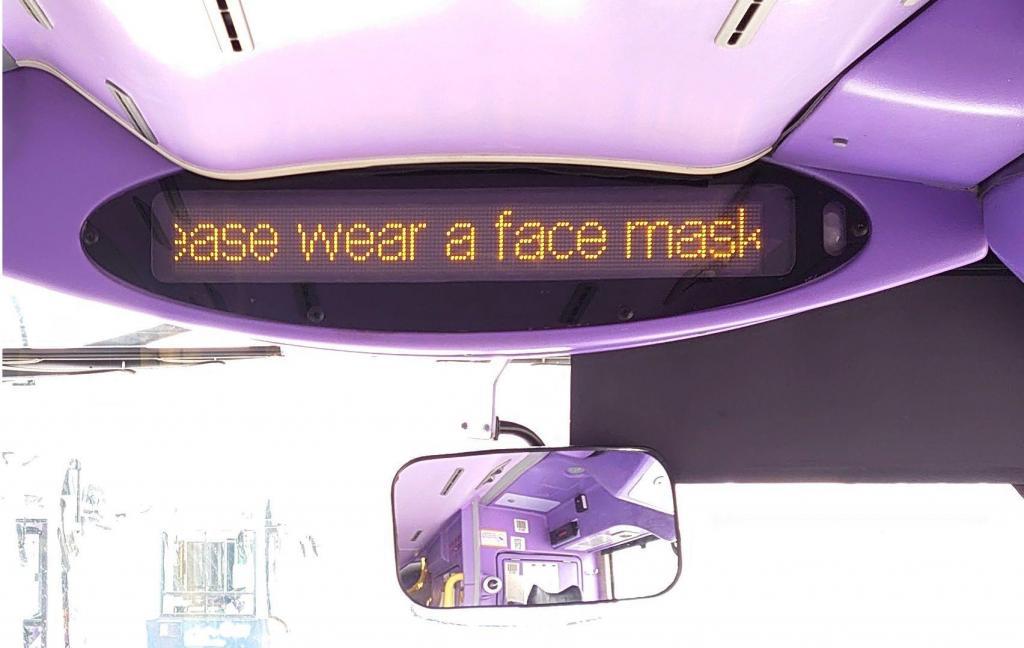Contain and Control: How public transport can learn from Hong Kong
How have cities such as Hong Kong contained COVID–19 without going into full lockdown? LIT Transit’s Head of Mobility, Ursa Hribernik, shares strategies used by one of the world’s leading transport systems
Keeping public transport operations running smoothly and efficiently can be demanding under the best of circumstances.
Managing operations effectively during the coronavirus pandemic presents new challenges. There is a careful balance to be struck between providing a reduced service that meets demand, while also managing complex risks so that everyone working in and using public transport is safe. Now is the time to take action to safeguard public transport if it is going to continue to serve and grow post-COVID-19. Making the most of the technology that is available is more important than ever. While there is great emphasis on personal protection, hygiene measures and sanitizing fleets, reducing contact and social distancing is imperative to minimizing the risks. What is the best way forward and what can we learn from cities that were better prepared and continued without resorting to disruptive lockdowns?
Spotlight on Hong Kong: How New World First Bus and Citybus responded and kept Hong Kong moving
Hong Kong moved swiftly to stem the contagion without rigid curbs on movement. The city quickly implemented strict controls and behaviour changes that proved to effectively contain COVID-19 transmission. This has included measures to protect the health of passengers and employees on public transport, implemented by New World First Bus and Citybus, members of NWS Holdings.
1. Fleet Sanitization
Buses are washed down daily using an automatic bus washing machine, with internal deep cleaning in all compartment areas using 1:99 diluted bleach or 1:49 where necessary. The operator is currently trialling the use of nano-photocatalyst spraying technology to test the effectiveness and long-term efficacy. This is a surface coating that has been touted as an effective solution to stop the spread of the virus.
2. Air Purification
The air conditioning system is equipped with a dust filter and electrostatic air cleaning device to strengthen the filtering of air particles and kill bacteria in the compartment. The dust filter is cleaned with diluted bleach by engineering staff at least every two weeks. Regular checks are conducted to ensure the air quality inside compartment that reaches “First Class of Good Air Quality” standards as stipulated by the Environmental Protection Department in Hong Kong.
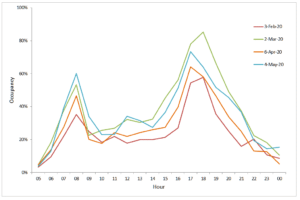
Figure 1: Bus occupancy during outbreak Source: NWFB & Citybus, 2020
3. Protecting Employees
All staff, contractors and visitors must measure their body temperature before work or entering premises using an infrared thermometer. Hand sanitizers are provided at bus depots, offices, regulator kiosks and resting facilities at major bus termini. Surgical masks are provided for all staff to wear when on duty. Transparent plastic barriers are set up at staff canteen to avoid spreading droplets. Cleaning of regulator kiosks and resting facilities are more frequent.
4. Responsive Operations
During the outbreak, commuter demand was affected by epidemic control measures implemented by the Hong Kong government. The operator adjusted bus services to align with passenger demand and travel pattern changes. Integrating figures from various systems, the operations team monitors hourly passenger demand pattern to adjust the fleet and crew schedule both precisely and swiftly. This enabled service levels to be fully optimized on different routes.
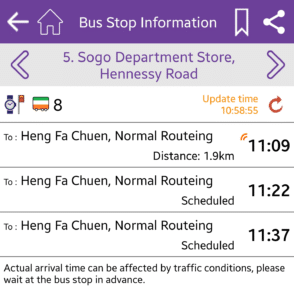
Mobile App, adapted to the pandemic. Source: NWFB & Citybus, 2020
5. Passenger Information
The latest service adjustments are well announced to passengers through the push notification function of the operator’s mobile app. Passengers also obtain real-time ETA departure information through the mobile app or website. In addition, the bus stop announcement system and motion bus stop display panel remind passengers of personal and environmental hygiene measures, such as wearing masks and protecting others from sneezes and coughs.
Hong Kong is better-equipped to contend with an outbreak of COVID-19 than many other countries due to the SARS outbreak in 2003. But what can other countries learn from them today?
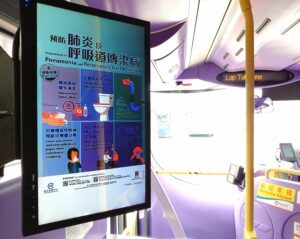
Passenger information systems adapted to the pandemic. Source: NWFB & Citybus, 2020
The key to successfully managing operations
Hong Kong moved swiftly to stem the contagion without rigid curbs on movement. The city quickly implemented strict controls and behaviour changes that proved to effectively contain COVID-19 transmission. This has included measures to protect the health of passengers and employees on public transport, implemented by New World First Bus and Citybus, members of NWS Holdings.
1. Managing operations
The situation has highlighted the importance of ensuring that bus operations can match demand or be used to discourage unnecessary travel in accordance with government directives. This involves controlling departures and reducing bus dispatch frequencies, as well as adjusting branch, peak and night routes and suspending inter-city bus services. Most operators have also faced the challenge of providing services with limited workforce due to absence. This is where the ability to manage fleet operations in real-time – coupled with data and analytics as in Hong Kong – becomes crucial. Automatic vehicle location (AVL) with a transit management system can offer city-wide visibility and control over transit network operations. It is possible to simulate workforce, fleet, route and schedule adjustments, then quickly implement any changes. With an integrated transit management and passenger information system, any service adjustments can be automatically updated in journey planning apps and on passenger information displays.
These systems also increase performance and operational efficiency, enabling transport providers to deliver better services with less resources.
2. Managing passenger flow
Operators can support social distancing measures by avoiding crowds gathering at bus stations, terminals and stops. Accurate real-time passenger information – accessed by mobile journey planning apps and websites as in Hong Kong – enables travelers to plan their trip in advance and time their arrival so that they do not take any unnecessary risks. When providing up-to-the-minute service times, real-time GTFS feeds could use an advanced ETA prediction engine to ensure that arrivals are as accurate as possible. The passenger information system and mobile apps can also be used to provide data on bus capacity or introduce other measures to stagger ridership. Passenger counting devices and cameras can be installed in vehicles and integrated with the transit management system, so operators can keep track of the 50% passenger load restrictions that have been implemented in some cities.
3. Regular and informative passenger communication
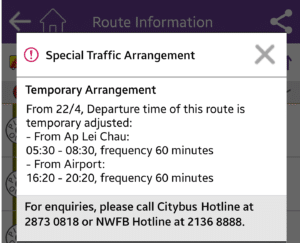
Passenger information conveyed on e-paper technology - How behavioral science can help with ‘normal’ after coronavirus Source: LIT Transit, 2020
Communication with passengers during these times is vital for maintaining public confidence in transport services and dealing with the situation with complete transparency. Authorities have a duty of care to share all potentially valuable information and news, as well as standards of conduct to reduce any risk associated with travel. Service changes and restrictions should also be communicated in advance where possible or in real-time as it happens.
Operators can keep their passengers fully informed, simultaneously and consistently across a wide range of channels with a passenger information system. Before travel via the website and mobile apps, at the start of the journey at stations and bus stops, and during the journey in the buses. Hong Kong have a well-established passenger information system and have used this to maximum effect.
4. Avoid cash handling with contactless payments
With growing concern over the safety of drivers, the authorities face pressure to ban cash handling. Some agencies have gone as far as suspending fares or fare enforcement while they look to implement contactless ticketing and automatic fare payment systems. Contactless ticketing comes in the form of:
Contactless card payment cEMV (contactless Visa, Europay and Mastercard)
cEMV mobile payment using NFC tags (Near Field Communication)
Mobile device QR code tickets (Quick Response)
Account based ticketing using pre-charged smart cards
Aside from the wider benefits, contactless payments immediately remove the need for cash to change hands. It also eliminates any contact between passengers and ticket kiosks, drivers or ticket inspectors. Hong Kong already had the OCTOPUS contactless smart card system in place. New World First Bus and Citybus also linked OCTOPUS with AVL. Drivers are free from manual section fare selection and this can minimize human error on wrong fare setting.
5. Enhance operation resilience with modern cloud-based systems
Advances in technology have enabled the public transport sector to operate in a dynamic digital world. This is largely a result of cloud-based transit platforms, offering ready-made solutions that can accelerate time to market.
These platforms also offer greater resilience by enabling workplace mobility. This means operations to continue in the event of a crisis like we are experiencing right now. They are accessible from any Internet-connected device, which means controllers and dispatchers can still run the transport system without being physically present in the company premises. The software is usually offered as a service (SaaS) giving operators the flexibility to introduce new tools and scale with pay-as-you-grow subscription packages that fit any budget. No longer does it take a year to implement a new tool, rather weeks or at most months. They also offer leading-edge capabilities as well as analytics, enabling operators to learn and adjust their models almost in real time.
These ‘transit systems as a service’ offer the fastest, most flexible path to implementing advanced transit management capabilities.
Final thoughts…
Hong Kong was able to react fast due to the advanced level of their digital maturity. Not only were their operations flexible and easily manageable, but they were able to swiftly take responsibility for the passenger safety. Digitally supported public transit is not only agile and able to respond quickly to emergency situations, but it can significantly reduce costs, improve services and enhance the passenger experience. European agencies and operators that lack the same level of digital maturity should consider moving digital transformation up the agenda. Then maybe the next crisis will become a major opportunity for public transit to thrive.
Forbes:“In Chinese, ‘crisis’ is expressed as 危機, which is a combination of two words: 危 (danger) and 機 (opportunity). The current danger is clear, and this could be an opportunity for all nations to drive more hygienic and efficient methods of payments going forward.”
Author: Ursa Hribernik is Head of Mobility at LIT Transit, global mobility technology provider present in more than 45+ cities. For more information on how to transform public transit in your city and arrange a demo: ursa.hribernik@lit-transit.com
